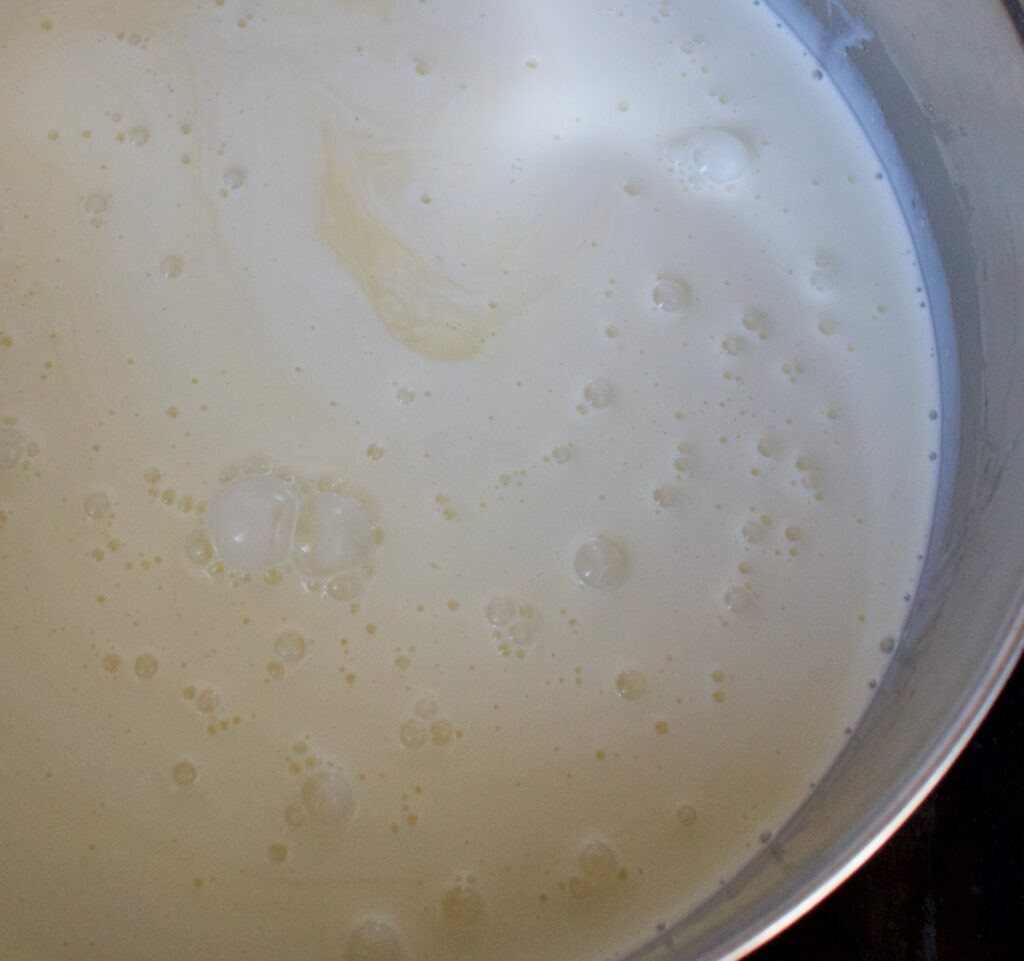This week on the blog we’re making ice cream! Just in time for the summer heat, this frozen custard ice cream is in honor of “Famous Georgians,” namely Dr. J.W.E. Bowen. In the cookbook he is introduced as the “Senior Clergyman of the ME Church, distinguished scholar, educator at Gammon Theological Seminary,” so let’s explore his biography!

Born John Wesley Edward Bowen, was born into slavery in 1855 in New Orleans, Louisiana. He gained his freedom through his father who purchased his whole family’s freedom in 1858, a common means by which enslaved people tried to gain freedom. While Bowen’s father served in the Union Army, he enrolled in Union Normal School in New Orleans. In 1878 he joined the first graduating class of New Orleans University, which had been founded by the Methodist Episcopal Church for freed enslaved people to gain an education. He then moved to Tennessee to teach at Tennessee College where he taught Latin, Greek, and mathematics between 1878-1882. Desirous of a religious education, Bowen then moved to Boston to pursue a Bachelors degree in Sacred Theology at Boston College, eventually going to earn his PhD in Historical Theology there, too. Bowen was the first African American to receive a PhD from Boston College and was one of the first African Americans to receive a PhD in the country.
Bowen became a known pastor and theologian throughout his life, beginning during his time at Boston College where he served as the pastor of Revere Street Episcopal Church in Boston. After graduating he moved to Newark New Jersey to pastor St. John’s Methodist Episcopal Church. He married Ariel Serena Hedges in 1886, and fathered four children. After receiving an honorary ThD from Gammon Theological Seminary, a school dedicated to the training of African American clergy, he moved to Baltimore to pastor the Centennial Methodist Episcopal Church there, as well as the Asbury Methodist Episcopal Church in Washington D.C.
In addition to his consistent service as a clergyman, Bowen was an educator. He taught church history and systematic theology at Morgan College and Hebrew at Howard University. Eventually, in 1893, Bowen moved to Georgia, hence his being counted as a “Famous Georgian” in the cookbook), to teach historical theology at Gammon Theological Seminary and quickly became the Seminary’s first full-time African American professor.

Bowen’s theological interest led him to become the Secretary of the Stewart Missionary Foundation for Africa at Gammon, and the editor of the Stewart Missionary Magazine. He was sent as the ME representative to the Conferences of World Methodism in Washington D.C. in 1891, and in London in 1901.
Driving Bowen’s prolific career was a clear vision of a new and liberated Black population who could build a new nation. This led him to take over and edit a monthly magazine called The Voice of the Negro in 1903, in Atlanta, Georgia, which had originally been owned by a white manager of the publishing company that printed it. Under Bowen’s leadership, in partnership with Jesse Max Barber, a Black journalist, teacher and dentist, the magazine was in print between 1904 and 1907. The magazine aimed to include “current and sociological history so accurately given and so vividly portrayed that it will become a kind of documentation for the coming generations.” The magazine’s manifesto, published in January 1904, included the following:
The Voice of the Negro for 1904 will keep you posted on Current History, Educational Improvements, Art, Science, Race Issues, Sociological Movements and Religion. It is the herald of the Dawn of the Day. It is the first magazine ever edited in the South by Colored Men. It will prove to be a necessity in the cultured colored homes and a source of information on Negro inspirations and aspirations in the white homes.
Bowen and Barber believed the magazine should be politically and ideologically independent to avoid partisan affiliation and strove to mediate the divide between Booker T. Washington’s economic ideology and W.E.B Dubois’ intellectual uplift ideology. The magazine consisted of national and local politics and in its time inspired Black intellectuals across the nation, including Du Bois himself and his Niagara movement in 1905.
In 1906 Bowen became the President of Gammon Seminary, a role he held until 1910. In the first year of this position he witnessed the Atlanta Race Riot, in which he offered the seminary as a sanctuary and shelter for Blacks fleeing the violence. Unfortunately, Bowen himself was beaten and arrested. It was around this time that the magazine relocated to Chicago, Illinois.
Bowen closed his career in 1923 after becoming the head of the Church History department at Gammon. Despite his retirement, Bowen continued to teach until a year before his death in 1933.
Bowen’s daughter in law, Margaret Davis Bowen (1894-1973), submitted the recipe. Margaret Bowen is noted as a “life member” of the NCNW, but was also a religious leader, civil rights activist, and educator. She led the Gilbert Academy, a prestigious private college for African Americans in New Orleans, in the 1930s. She received her masters in Education from the University of Cincinnati in 1935, and also served as the international president of Alpha Kappa Alpha from 1936 to 1939. To this day the sorority has a Margaret Davis Bowen Outstanding Alumni Award.
The Dish

Ingredients
1 pint milk
⅛ tablespoon salt
1 tablespoon flour
1 pint cream
1 cup sugar
1 tablespoon flavoring (we chose vanilla)
2 or 3 eggs
So, this was a pretty straightforward recipe to make! We did not have a double boiler so we did the tried and true method of using a pyrex dish over a boiling pot of water to complete the first step: scalding the milk. While I (Abena) handled that, Kayleigh beat the eggs slightly (since I’m allergic to raw eggs) and then we joined forces to add in half of the sugar, slowly add in the milk, while I stirred constantly as the recipe instructed.


We then poured the mixture back into the double boiler and cooked until it began to thicken, which took a little longer than the 10 minutes the recipe stated. Lastly, we added in the rest of the sugar, allowed it to cool down and added the cream and vanilla, before putting it in the freezer.

This process was extremely straightforward and the hardest part was waiting overnight for it to solidify before trying it! When we got to try it, it was really sweet (we’re finding this is a common trend in the deserts we make), but otherwise a pretty classic vanilla ice cream that we would definitely make again!

Final Thoughts
Overall, this was really fun to make and I was surprised it was so easy to make, because I had never made ice cream before. We would definitely tweak the sugar content if we did make it again, but we’d recommend this one!
Notes
Portrait: “J.W. E. Bowen.” In Bowen, J.W.E., ed. Addresses and Proceedings of the Congress on Africa. Held under the Auspices of the Stewart Missionary Foundation for Africa on Gammon Theological Seminary in Connection with the Cotton States and International Expansion. Miami: Mnemosye Publishing Inc., 1969.
Bowen, John Wesley Edward (1855-1933): Educator and Theologian: https://www.bu.edu/missiology/Umissionary-biography/a-c/bowen-john-wesley-edward-1855-1933/
Johnson, Bethany (Spring 2000). “Freedom and Slavery in the Voice of the Negro: Historical Memory and African-American Identity, 1904-1907”. The Georgia Historical Quarterly. 84 (1): 29–71. JSTOR 40584226 – via JSTOR.
